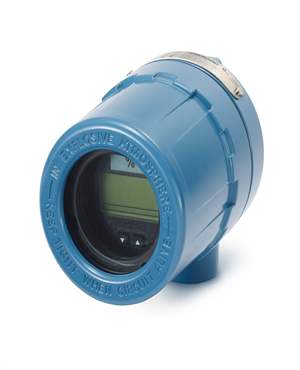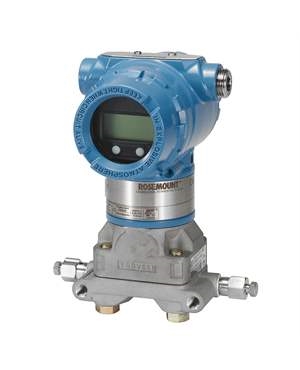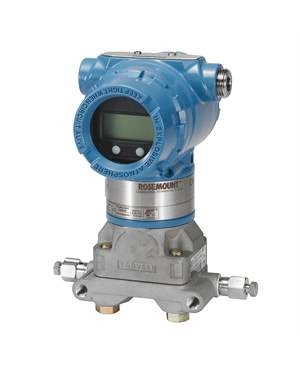Vacuum Pressure Gauges: Understanding the Basics
Brian Craig
December 12, 2023
Vacuum pressure gauges play a pivotal role in a multitude of industries and applications, serving as crucial instruments for measuring and monitoring pressure levels in vacuum systems. In this blog, we will delve into the fundamental aspects of vacuum pressure gauges, unraveling the mystery behind their operation and exploring their significance in diverse fields.

Vacuum Pressure
Vacuum pressure refers to the pressure level within a space that contains fewer gas molecules than the surrounding atmospheric pressure. In simpler terms, it is the measure of the force exerted by a vacuum, where the absence of air or gas creates a low-pressure environment. Understanding vacuum pressure is essential in various industries and applications, as it directly impacts processes and systems reliant on specific pressure conditions.
Units of Measurement (torr, pascal, bar, etc.)
Vacuum pressure is quantified using various units of measurement, each catering to different applications and precision requirements. The common units include:
- Torr: Named after Evangelista Torricelli, Torr is a traditional unit of pressure often used in vacuum technology. It is equivalent to the pressure exerted by a one-millimeter-high column of mercury.
- Pascal (Pa): The SI unit for pressure, named after Blaise Pascal. It is defined as one newton per square meter. In vacuum applications, pressure is often measured in kilopascals (kPa) or megapascals (MPa).
- Bar: Equal to 100,000 pascals, the bar is a unit of pressure commonly used in the industry. Vacuum pressures are often expressed in millibars (mbar) or microbars (µbar) for more precise measurements.
- Atmosphere (atm): Atmospheric pressure at sea level is often used as a reference point. Standard atmospheric pressure is approximately 101325 pascals, and vacuum pressures are expressed as a fraction or percentage of this value.
Types of Vacuum Pressure Gauges
Vacuum pressure gauges come in a variety of types, each employing distinct mechanisms to measure and display pressure accurately. Understanding these types is crucial for selecting the most appropriate gauge for a given application.
- Bourdon Tube Gauges: Bourdon tube gauges rely on the elastic deformation of a curved tube. As pressure increases, the tube straightens, and this motion is mechanically linked to a needle or dial, providing a pressure reading.
- Diaphragm Gauges: Diaphragm gauges utilize a flexible diaphragm that deforms with changes in pressure. This deformation is transferred to an indicator, offering a pressure reading.
- Pirani Gauges: Pirani gauges measure pressure by assessing the thermal conductivity of the gas. A heated element loses heat to the surrounding gas, and the temperature change is correlated with the pressure level.
- Thermocouple Gauges: Thermocouple gauges use a heated wire, and as gas molecules collide with the wire, they cool it down. The cooling effect is measured and correlated with the pressure.
- Ionization Gauges: Ionization gauges function by measuring the ion current generated when gas molecules are ionized. The current is proportional to the gas pressure, providing a measure of the vacuum level.
- Capacitance Gauges: Capacitance gauges measure pressure by detecting changes in capacitance between two plates caused by the displacement of a diaphragm. This displacement is influenced by pressure variations.
Common Applications of Vacuum Pressure Gauges
- Manufacturing: Vacuum pressure gauges are integral in manufacturing processes, especially in industries such as semiconductor manufacturing, where precise vacuum control is vital for ensuring the quality and functionality of electronic components.
- Vacuum Furnaces: Vacuum furnaces are employed in heat treatment processes, and vacuum pressure gauges play a crucial role in monitoring and controlling the vacuum levels within the furnace. This ensures the desired temperature and atmosphere for efficient heat treatment.
- Physics Experiments: In laboratories conducting physics experiments, vacuum pressure gauges are essential for creating controlled environments necessary for various studies, such as those involving particle accelerators or plasma physics.
- Chemical and Biological Research: Vacuum pressure gauges find application in chemical and biological laboratories for tasks like distillation and filtration, where controlled vacuum conditions are essential.
- Air Conditioning and Refrigeration: Vacuum pressure gauges are used in the installation and maintenance of HVAC systems, particularly in tasks like refrigerant evacuation and system leak detection.
- Building Pressure Control: In HVAC systems for buildings, vacuum pressure gauges assist in controlling air pressure within controlled environments, ensuring proper ventilation and air circulation.
Choosing the Right Vacuum Pressure Gauge
- Pressure Range: Different applications require vacuum pressure gauges with specific pressure range capabilities. Some gauges are designed for high vacuum environments, while others are more suitable for low to medium vacuum levels.
- Environmental Conditions: The operating environment can impact gauge performance. Industries with harsh conditions or exposure to corrosive substances may require gauges with robust construction and materials resistant to environmental factors.
- Type of Gas: The type of gas present in the vacuum system can affect gauge accuracy. Some gauges are optimized for specific gases, and it's important to choose one that suits the composition of the gas in the application.
- Application Sensitivity: The level of precision required for a particular application is a critical factor. Some processes demand highly accurate pressure readings, while others may tolerate a lower level of precision.
- Calibration and Certification: Regular calibration is essential to maintain gauge accuracy. Some applications, such as those in regulated industries, may require gauges with certifications to meet specific standards.
- Dynamic Pressure Changes: Some applications involve rapid or dynamic pressure changes. The gauge's response time and ability to provide accurate readings during such changes are important considerations.
- Ease of Calibration: Regular calibration is crucial for gauge accuracy. Choosing a gauge that is easy to calibrate or one that can be easily serviced by technicians is important for efficient maintenance.
- Durability and Longevity: The durability of a vacuum pressure gauge directly impacts its lifespan and maintenance requirements. Gauges designed with durable materials and construction can withstand challenging environments.
- Compatibility with System Components: Ensuring compatibility with existing or planned system components is vital. This includes factors such as mounting options, size, and connection types.
Understanding vacuum pressure gauges is not merely a technical necessity but a key factor in ensuring the efficiency, safety, and reliability of various industrial processes. As technology progresses, the adoption of advanced pressure measurement technologies becomes integral to staying competitive and achieving optimal performance in diverse applications. The Transmitter Shop (TTS) is a distributor of superior quality remanufactured transmitters, gauges and control valves originally sourced from reputed brands such as Fisher Vee-Ball, Rosemount and so on. If you want to know more about our services please contact us via phone +1-888-964-8837, or via email at [email protected]
Related Posts
- Steam Boiler Drum Level Measurement A Comparison of Control System Technologies
- Furnace Flame Sensor Faults Everything You Need to Know for Safe Operation
- Comparison between Multi Valve Manifolds Block Valves and Bleed Valves
- Understanding Electrochemical Detection: Principles, Techniques and Environmental Application
- How Can Greenhouse Gas Emissions Be Reduced?
- Furnace Flame Sensor Faults Everything You Need to Know for Safe Operation
- Understanding Electrochemical Detection: Principles, Techniques and Environmental Application
- How Can Greenhouse Gas Emissions Be Reduced?
- Pneumatic Pressure Controllers: A Safe Choice for Hazardous Areas
- A Practical Guide to Vacuum Measurement and Operation
QUICK ENQUIRY







